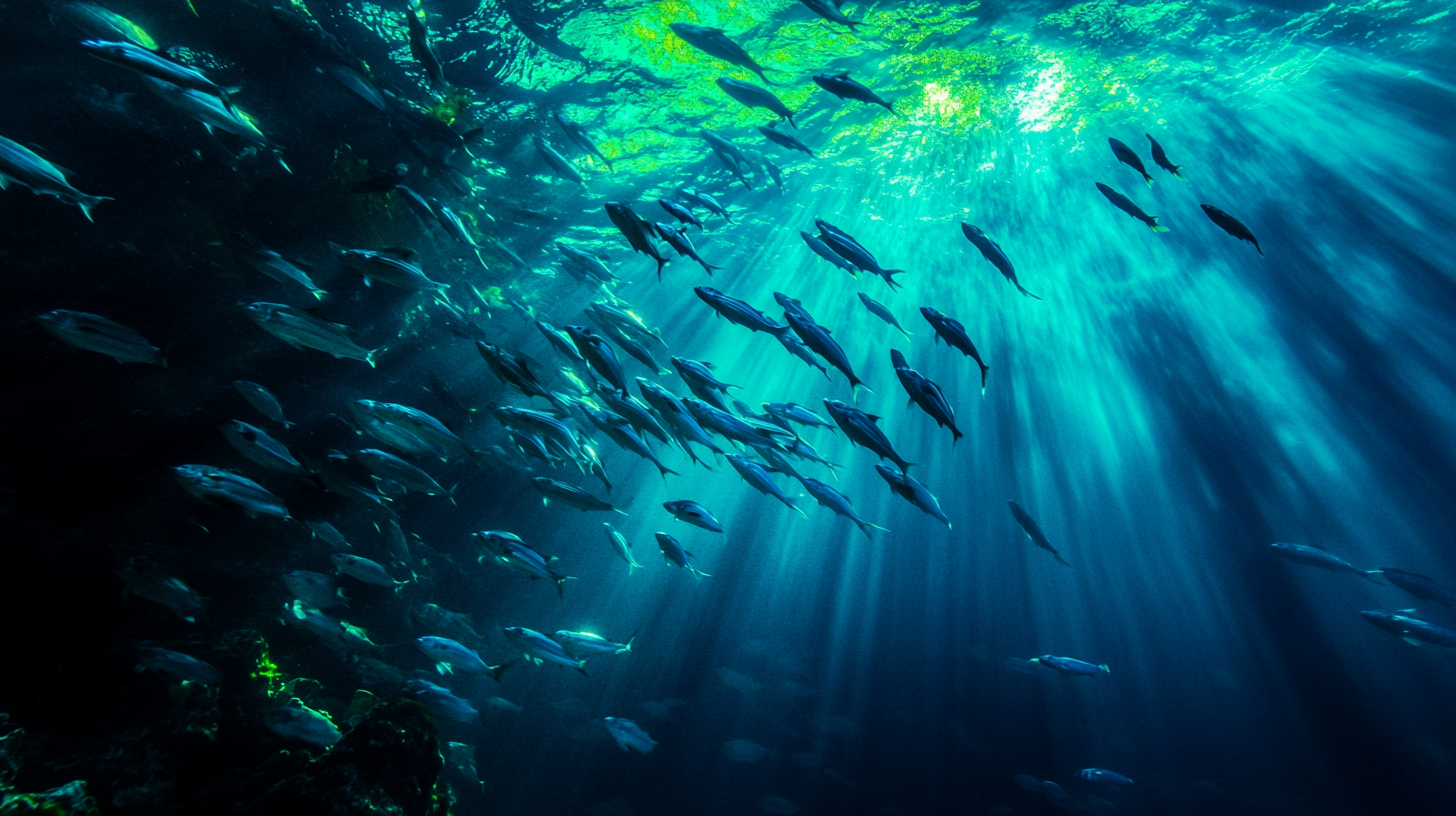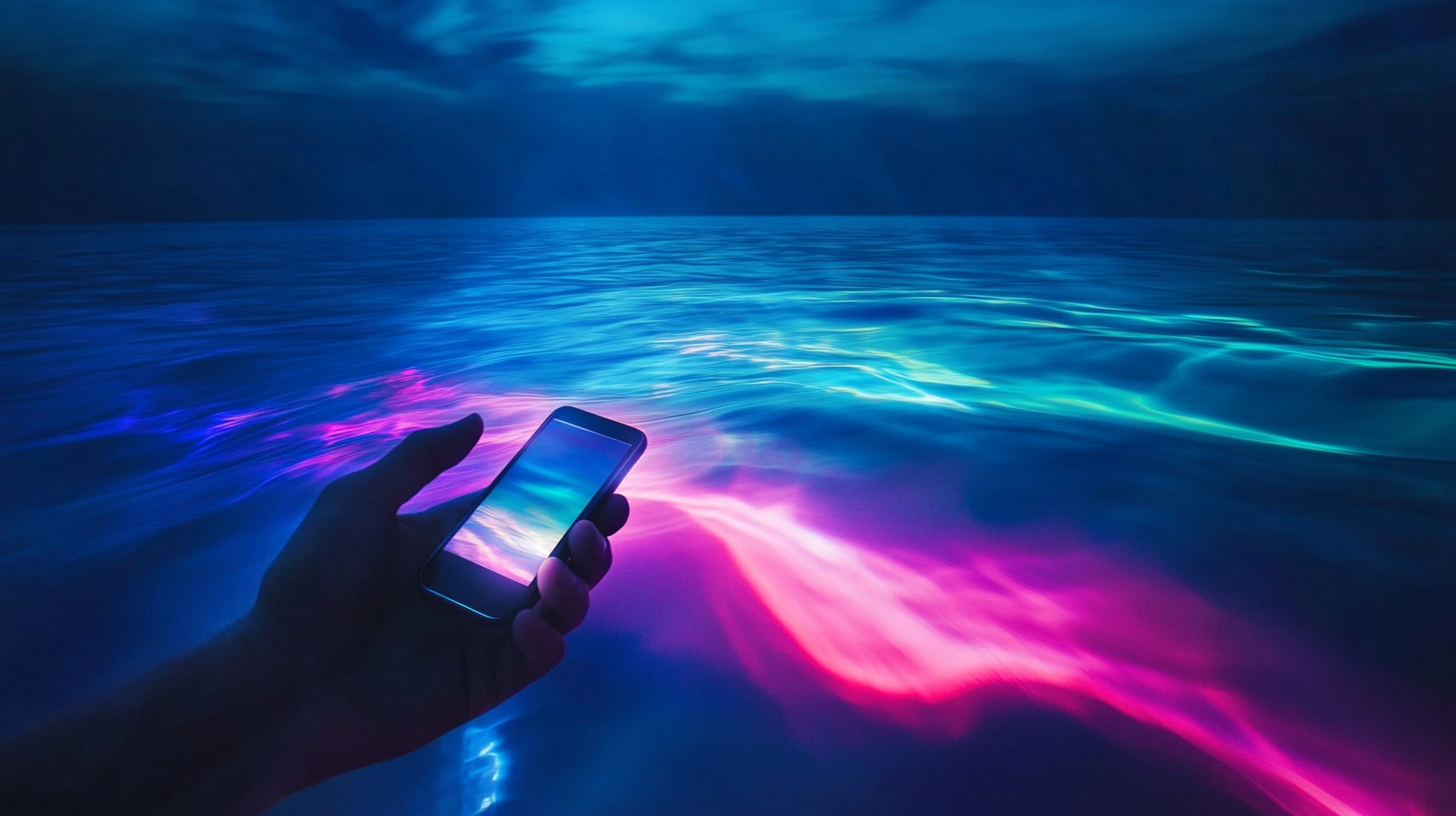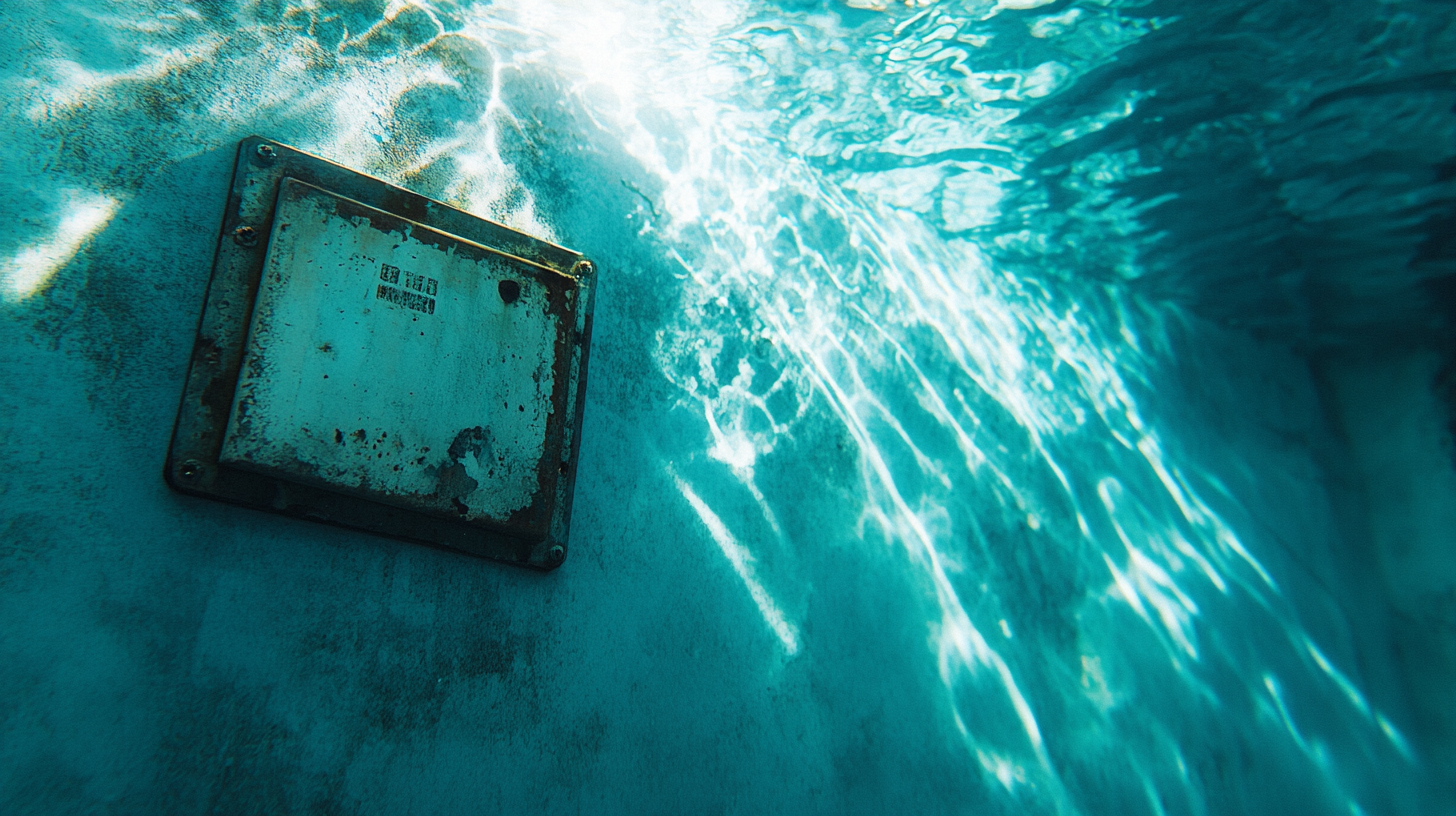Underwater boat lights for attracting fish: myth or reality?
Ever wondered what’s going on beneath the surface when you drop your line into the water? Understanding fish behavior is like cracking the code to successful fishing. Fish are naturally drawn to certain conditions, and one of these is light. Whether underwater lights actually help in attracting fish is often debated—some might even consider it a “myth or reality” kind of discussion. However, the fact is that many fish species are instinctively drawn to light because it closely mimics the conditions they associate with food. During the night or in deeper waters, where it’s darker, a burst of light can simulate the natural light from the moon or stars, signaling to fish that potential prey is near.
The mechanics behind this behavior are rooted in the fish’s biology. Fish like baitfish, for example, are attracted to light because they tend to follow and feed on plankton, which are themselves drawn to lit areas. Larger predator fish follow suit, knowing that a brightly lit area could be a buffet of smaller fish. Essentially, it’s a chain reaction, all starting with something as simple as underwater lights.
Another fascinating aspect is how different species respond to different types of light. Some fish are more sensitive to light, while others rely more on scent and movement in the water. But generally, the introduction of light under the water does serve a specific function—creating an inviting micro-environment where fish are naturally drawn together. So, yes, while seasoned anglers might argue whether lights are a sure thing or just part of the “fishing myth,” there’s a sound basis behind why certain lights might increase your chances of making a catch.
Science behind underwater lights
The effectiveness of underwater lights for attracting fish isn’t just speculative; there’s a healthy dose of science behind it. When you’re shining a beam of light in otherwise dark or murky waters, you’re not just illuminating the area—you’re fundamentally altering the environment in ways that appeal to many species of fish. But how does this work, exactly?
First off, let’s talk about the concept of phototaxis, which is a fancy term for how organisms, including fish, respond to light. Positive phototaxis is observed when fish are drawn towards a light source. When you switch on an underwater light, you’re essentially triggering this natural response. For example, plankton—the tiny organisms that form the base of the aquatic food chain—tend to gather around light sources. This leads to a domino effect. Smaller fish, like shad and minnows, head toward plankton-rich areas. And as they say, where there are small fish, larger predator fish are sure to follow. In this way, your underwater lights are setting up an artificial yet highly effective fishing trap, where the entire food chain is compacted into a glowing, irresistible target area.
The color and intensity of light also play significant roles in how effective it is at attracting different species. Water absorbs light at different rates depending on the wavelength. For example, blue light penetrates deeper into the water column than green or red. This is why blue and green lights tend to be more commonly used in fishing—they can illuminate larger areas and at greater depths. However, some fish are more responsive to specific colors, adding another variable to the equation. So when debating whether the phenomenon of using underwater lights for attracting fish is myth or reality, the scientific principles involved tip the scales towards reality.
On top of that, human observation backs up what science says. Anglers have consistently reported an increase in fish activity around their lit boats, particularly in low-light conditions like night fishing. This is no coincidence but a testament to the biological responses that fish exhibit when exposed to carefully placed light sources. The science may not be foolproof—fishing never is—but it provides a justified basis for the practice. By understanding why and how light works to draw fish in, anglers can use this method more effectively, making the most of every trip out on the water.
Common myths and misconceptions
It’s easy to get caught up in the excitement of trying out the latest fishing gadgets and techniques, especially when friends or fellow anglers are swearing by them. However, like with many things in the fishing world, a great deal of misinformation tends to float around. One of the biggest areas where myths and realities clash is in the use of underwater lights for attracting fish. Let’s break down some of the most common myths associated with this practice and compare them to what actually happens beneath the surface.
One widespread myth is that any light will do the trick when it comes to fishing. Some anglers might think they can simply toss a flashlight overboard and expect fish to start swarming in. The reality is a bit more nuanced. The truth is that not all lights are equal when it comes to attracting fish. The color, intensity, and even the positioning of the light make a significant difference in its effectiveness. For instance, as previously mentioned, blue and green lights are more effective than others because they penetrate deeper into the water and are more visible to fish. In shallow waters, a flashlight might have some limited success, but it’s not well-suited for attracting fish in more challenging conditions.
Another common misconception is the notion that the brighter the light, the better. People often believe that blasting the water with the most intense light possible will bring more fish to the surface. It seems logical, right? More light means more attraction? Not so fast. While it’s true that fish are attracted to light, too much light can actually have the opposite effect. Fish, just like humans, can become disoriented or even spooked by overly intense light. The key is to find the right balance of brightness—enough to attract fish without overwhelming them. Subtlety often works better than going full high-beam across the lake.
There’s also the belief that underwater lights alone are a silver bullet for catching fish—that you can just switch on the light and sit back, waiting for the fish to practically jump into the boat. While lights certainly increase your chances, they are not some magic solution. Attracting fish with underwater lights is just one part of the equation. You still need to rely on proper lure selection, bait, and technique. Fish may be drawn to the light, but they won’t bite if they’re not interested in what you’re offering. In other words, the light gets them to the dinner table, but it’s up to you to serve them something they want to eat.
Finally, some people hold fast to the old belief that “real fishermen” don’t need gimmicks like underwater lights. This myth usually stems from the idea that traditional fishing methods should be enough if you’re skilled enough. While there’s certainly a romantic notion to mastering the basics, there’s no harm in enhancing your experience with modern technology. After all, fishing is an activity that’s as much about enjoying your time on the water as it is about bringing home a catch. If using underwater lights makes fishing more enjoyable or fruitful for you, then there’s no reason to dismiss it as a gimmick. The myth or reality debate shouldn’t sideline the fact that technology can indeed make a difference in your fishing success.
Debunking these myths helps to clarify what underwater lights can realistically do for your fishing adventures. Instead of clinging to misconceptions, it’s far more productive to understand the science and subtleties behind this tool. When used correctly, underwater lights can become a valuable asset in your angling arsenal, helping you attract fish more effectively while leaving behind the myths that might otherwise limit your success.
Choosing the right color and intensity
When considering which underwater light to use for fishing, two critical factors come into play: color and intensity. These components are heavily influenced by the species of fish you’re targeting, the depth of the water, and the overall fishing environment. Choosing the perfect light setup can mean the difference between a fruitful night of fishing and heading back home empty-handed, but don’t worry—there’s both science and significant practical experience to guide your decision.
Color is arguably the most critical factor when choosing an underwater light. The three most popular colors for underwater fishing lights are green, blue, and white. Each of these colors has unique properties that make them effective under different conditions and for attracting different species of fish.
– Green Light: Green is often considered the gold standard for underwater fishing lights. This color is highly effective because it has a wavelength that penetrates water well, making it visible to fish in deeper layers. Not only does green light attract plankton—which serves as the base of the aquatic food chain—but it also draws baitfish like shad and minnows, which, in turn, bring in larger predator fish such as bass and snapper. Green light is particularly effective in murky or nutrient-rich waters, where it can cut through the density and create a well-lit area that fish find irresistible.
– Blue Light: Blue light is another excellent option, especially when fishing in clear waters or targeting specific species that are more responsive to this wavelength, like squid or some varieties of deep-sea fish. Blue light has the ability to penetrate water deeper than any other color due to its shorter wavelength, making it ideal for attracting fish at greater depths. Additionally, blue light scatters less in water, which means it creates a focused, intense beam that can allure fish from farther away.
– White Light: White light is versatile and can attract a wide range of species. It’s particularly effective in shallow or turbid waters where visibility can be challenging. The broad spectrum of white light mimics the appearance of natural light, which can simulate daylight conditions even after the sun has set, helping to make your fishing spot an appealing gathering ground for various fish. However, be cautious with the intensity, as too much brightness can spook fish or drive them away.
The second critical factor is intensity, which refers to the brightness or power of the light. While it might seem intuitive to assume that brighter lights would be better, this is not always the case. Just as light color can affect different species in different ways, so too can light intensity.
Many fish species are attracted to a subtle, subdued glow rather than a harsh burst of brightness. As such, selecting the right intensity often involves balancing visibility for the fish without overwhelming them or altering the natural aquatic environment too drastically.
When fishing in shallow waters (less than 15 feet deep), lower light intensity is usually sufficient. Too much light in this environment may actually disperse the plankton and baitfish, thus minimizing your chances of attracting larger fish. Conversely, in deeper waters, a higher intensity light can be more effective as it needs to penetrate through more water to reach fish that are farther below the surface.
Additionally, light intensity should be adjusted based on the ambient conditions. A moonless night, for instance, may call for a slightly brighter light compared to a night where the moon illuminates the water surface. Too much light might compete with the moonlight, whereas too little will fail to attract sufficient marine life.
Here’s a basic guide to selecting color and intensity based on different fishing scenarios:
| Fishing Scenario | Recommended Light Color | Recommended Intensity (Lumens) |
|---|---|---|
| Shallow, Murky Waters | Green | 500-1,000 lumens |
| Deep, Clear Waters | Blue | 1,000-3,000 lumens |
| Shallow, Clear Waters | White | 200-800 lumens |
| Night Fishing on the Surface | Green or Blue | 300-1,000 lumens |
| Deep-Sea Fishing | Blue | 3,000 lumens or more |
It’s crucial to understand that the optimal color and intensity settings might require some trial and error, as they can be influenced by location-specific factors such as water clarity, depth, and the type of fish you’re trying to attract. When approaching this tool scientifically, instead of wondering whether using underwater lights is myth or reality, you’ll realize a balanced and well-considered approach can substantially improve your fishing success.
By carefully choosing the right color and intensity, you can effectively optimize your use of underwater lights, increasing your chances of attracting fish and making the most of your time on the water.
Practical tips for successful fishing with lights
Once you’ve selected the appropriate color and intensity for your underwater lights, it’s time to apply some practical techniques to maximize their effectiveness. Whether you’re a seasoned angler looking to refine your strategy or a beginner eager to see results, following a few key tips can make all the difference when using these lights to attract fish.
One of the first things to consider is the placement of your underwater lights. Positioning your lights properly can significantly impact their efficiency in attracting fish. Start by placing the lights at various depths around the boat to create a well-lit area in the water. A good rule of thumb is to submerge the lights at least 3 to 6 feet below the surface. This setup minimizes glare and ensures that the light reaches deeper into the water column, drawing fish towards you from different layers. Also, by placing lights in multiple spots around the boat, you create a more natural and expansive glow, mimicking a moonlit or starlit environment that fish find comforting.
Another important tip is to allow some time for the lights to work. Patience is key when it comes to fishing with underwater lights. After turning on the light, it could take anywhere from 15 minutes to an hour before you start seeing the fish gather around. Remember, the light first attracts plankton, which then draws in the smaller baitfish. Only once these small fish have gathered will you see the larger predator fish begin to appear. Don’t be tempted to move your boat or readjust the lights too soon—wait for the food chain to establish itself.
Incorporation of a natural-looking bait presentation is critical when using underwater lights. Fish may be lured by the light, but they still need to be convinced that the bait is worth biting. The light can make your bait more visible, so focus on how it moves in the water. Use lures that mimic the appearance and motion of the baitfish being attracted to the light, such as swimbaits or jigs, which can imitate fleeing or injured fish. If you’re using live bait, make sure that it’s presented in a way that allows for natural movement within the beam of light, making it irresistible to the larger fish watching from below.
To further elevate your chances of a successful catch, consider experimenting with your fishing techniques around the lit area. For instance, try vertical jigging through the illuminated zone. This method capitalizes on the concentration of fish at different depths. By moving your lure up and down in varying areas of the light’s reach, you cover more ground and increase your chances of enticing a strike. Similarly, trolling slowly around the outskirts of the lit area can target larger fish that are hanging back from the brightest spot, waiting for weakened or startled baitfish to drift their way.
Don’t overlook the current and tide conditions, either. Fish behavior is heavily influenced by water movement, so coordinate your lighting strategy with the flow of water. In situations where the current is strong, position your lights so that they point upstream or into the current. This setup allows the lighted area to stay concentrated in one location while drifting plankton and baitfish are funneled naturally towards your boat, creating a more realistic environment that fish are used to. On the other hand, during slack tide, you may want to position the lights in multiple angles to compensate for the missing water movement, ensuring that light still spreads effectively through the area.
Lastly, don’t forget about the safety aspects of using underwater lights. Ensure that all your equipment is suitably waterproof and that all connections are secure. Anchoring your boat correctly is also crucial when deploying submerged lights. This prevents your boat from drifting and taking the light with it, which could scatter the fish and disrupt your strategy. Proper boat stabilization allows the light to work continuously in one concentrated zone, thus creating a reliable hotspot for attracting fish.
By implementing these practical tips, you’re not just relying on the myth or reality debate of underwater lights, but actively optimizing your fishing approach. From correct placement and the patience required to the strategic use of bait and understanding of environmental conditions, these steps will help you attract more fish and make your night fishing ventures more successful. Whether you’re a first-time user of underwater lights or looking to fine-tune your existing strategy, adopting these tips will improve your outcomes, ensuring that your time spent on the water is both enjoyable and rewarding.


